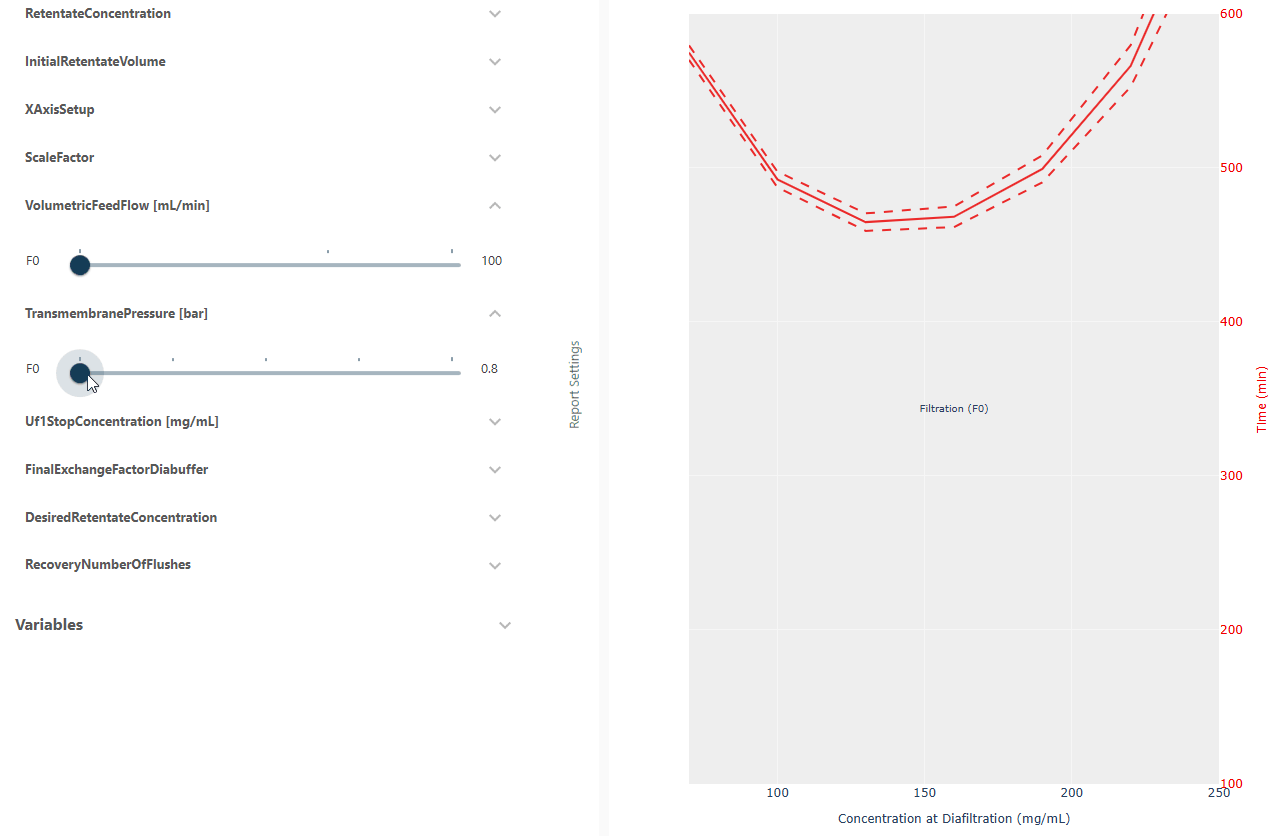Hybrid Modeling Meets Filtration: Optimizing UF and DF in Monoclonal Antibody Processing
Producing monoclonal antibodies often involves the challenge of balancing high protein concentrations with the risk of membrane fouling or poor recovery. Our innovative workflow captures detailed experimental data from a single experiment to characterize key variables like membrane behavior and protein recovery rates. Leveraging this data, we use AI-powered models that work in combination with a solid mechanistic backbone, containing both experimental insights and process knowledge. The result? Optimized filtration conditions, reduced resource consumption, and significant cost savings—all while ensuring broad applicability and adaptability of the model across various mAbs.
A Real-World Application: Optimizing mAb Ultra-Diafiltration
Imagine a biopharma company struggling to improve yield while reducing costs in mAb purification. Traditional trial-and-error approaches lead to excessive protein consumption, suboptimal recovery and poor allocation of workforce while Novasign’s smart workflow and AI-powered hybrid model solutions help our customers to find:
- Data-Driven Decisions: Using a single experiment, key process parameters are scouted for, such as membrane properties and fouling tendencies.
- Optimized Switching Points: The hybrid model predicts the ideal protein concentration to transition between UF and DF for maximum buffer and time efficiency.
- Minimial Product loss: High protein concentrations often go hand in hand with product loss on the membrane. Our model shows that with increasing concentrations, more product will accumulate on the membrane and therefore more flushes are required to recover it. As this can lead to lower recovery concentrations, the hybrid model is employed to predict the optimal number of flushes and their respective volumes to achieve high recovery concentrations while minimizing product loss.
- Predict Product Quality: If the process itself impacts the product, the model can predict the optimal balance between quality, concentration, cost and time to get the most out of the filtration unit operation.
These advantages can be comprehensibly displayed in Novasign’s Digital Twin, making process optimization easier than ever:

The figure above shows the in-silico optimization of the UF-DF process in Novasign’s Digital Twin. This digital representation was established based on data from a single run and prominently displays the effects of changing process parameters on the predicted overall duration based on performing diafiltration at different concentrations. At low flow velocities, the shortest process time is achieved at a concentration of 150 g/L, while higher feed flows shift the optimum towards high concentrations. The transmembrane pressure, in contrast, drastically impacts the overall diafiltration duration without altering the optimum point.
Transforming Bioprocesses for the Better
This UF-DF optimization workflow demonstrates how hybrid modeling can elevate biopharma operations to new levels of efficiency. By combining mechanistic understanding with the predictive power of machine learning, we enable insights and optimizations that are challenging to achieve with traditional approaches. Curious about how this technology can improve your processes? Contact us today and start your journey towards smarter bioprocessing.
For more information feel free to also read our publication. It provides the basis of our modeling approach.